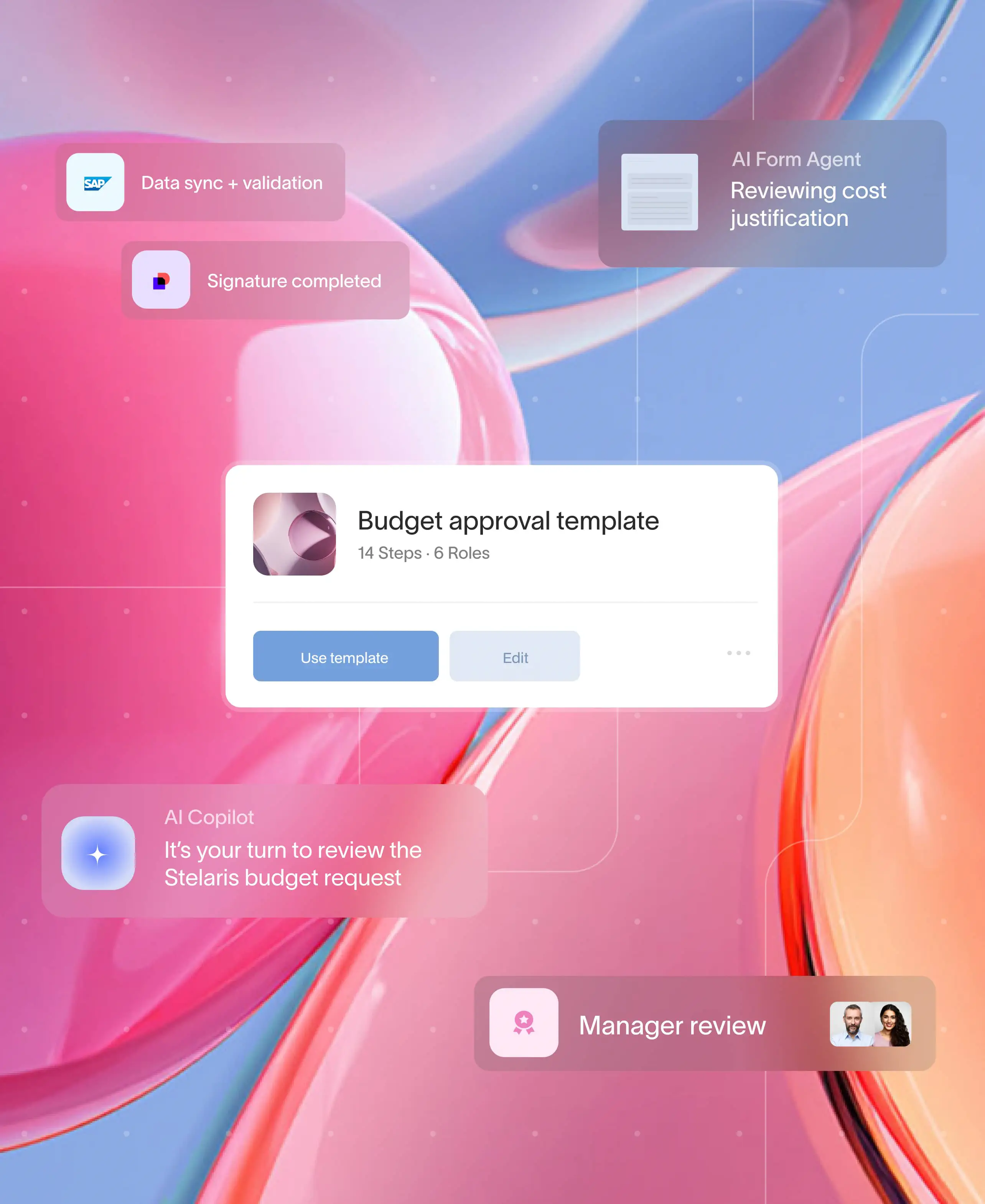
Today, every business is constantly looking for ways to improve customer retention and satisfaction. One crucial phase that determines the future of customer relationships is the customer onboarding process. A well-executed customer onboarding experience ensures customers are aware of the business and its processes.
Onboarding not only provides new customers with a thorough understanding but also helps retain existing ones. A seamless onboarding process transforms a one-time customer into a loyal and long-term client.
At the core of an effective onboarding experience is effective client communication. Communication sets the tone for the relationship, making customers feel valued, supported, and understood. From the initial introduction to the ongoing support, communication drives the effectiveness of the onboarding journey.
Let us further explore how communication plays an important role in customer onboarding.
Understanding customer onboarding
Customer onboarding familiarizes customers with the business. It helps customers understand how the business meets their needs. It also builds trust, fosters relationships and empowers customers to use a service with confidence.
Using the customer onboarding best practices reduces churn rates while ensuring customer success, satisfaction, and loyalty. A successful onboarding process takes customers from the initial step to turning them into engaged and loyal clients.
Role of effective communication
Client communication is at the heart of onboarding. Without clear, consistent, and timely communication, customers might feel lost. Thus, effective communication reassures the customers and guides them with relevant information.
How a business communicates with its clients directly impacts its reputation. Moreover, it also enables businesses to address the customer's concerns more quickly and accurately.
The role of communication in customer onboarding is 2-fold:
- Making customers aware: Clear communication ensures that customers are aware of the benefits, value proposition, and services a business offers.
- Building trust: It establishes a lasting relationship based on transparency, responsiveness, and reliability.
As effective communication ensures both of these, onboarding becomes smooth, flawless, and efficient.
How does communication ensure effective customer onboarding
Communication can be understood as the central essence of enhancing the effectiveness of the client onboarding process. Here's why communication is essential at various stages of customer onboarding.
1. Building trust and confidence
The first interaction between a client and a business sets the foundation for the relationship. With a strategic and systematic onboarding process, customers feel confident, supported, understood, and valued. Communication is the key to establishing trust during the onboarding process.
Clear, consistent, and frequent communication helps build trust and loyalty among customers. Additionally, they feel more secure in their choice and motivated to engage with the business. Communicating the relevant information in an accessible manner reassures the customers to foster a trusting relationship.
2. Setting clear expectations
Effective communication also helps in setting clear expectations from the start. During onboarding, effective communication informs the customers about what to expect throughout the process. This includes timelines, features, available support, and potential challenges.
By outlining the process, businesses ensure that customers don't feel lost or confused. It also avoids misunderstandings and creates a sense of alignment between the customers and the business, driving ongoing success.
3. Empowering the clients
Customer onboarding isn't just introducing a business; it is about empowering customers to make the most of it. Through effective communication, businesses support their customers against potential challenges. It makes the customers knowledgeable and confident of the business.
Communication during onboarding also engages the customers with accessible information. Instead of overwhelming the customers with excessive information, effective communication offers valuable information to boost customer retention.
4. Reducing churn
A poor onboarding experience is one of the most significant reasons for customer churn. If the communication during onboarding lacks the essential information and response, customers are likely to become frustrated.
On the other hand, with clear and effective communication, businesses can create a positive and engaging customer experience. Proactive communication further helps customers to stay updated, preventing any misunderstanding, leading to churn.
5. Personalization
Every customer is unique, and their onboarding process should reflect that. Personalized communication makes the onboarding process more relevant and engaging for the customers. Moreover, personalized communication helps track the progress and address specific concerns.
Personalized communication also builds a stronger connection between the business and customers. As customers feel more confident and valued by the business, they stay engaged and committed to it.
6. Ongoing support and engagement
The role of effective communication doesn't end after the first step. To keep the customers loyal, businesses must maintain ongoing communication and support. This ensures that customers always have access to the updated and relevant information.
Regular check-ins during the onboarding process help businesses stay connected with their customers. With open lines of communication, businesses foster lasting client relationships with higher engagement.
7. Feedback for continuous improvement
Communication during the onboarding process isn't just about passing information to customers; it is also about listening to them. Regular feedback helps businesses understand customer experiences and identify areas for improvement.
It also helps businesses to offer instant responses to customers, improving their experience. As customers become confident that their opinions matter, they stay loyal and committed to the business.
How does Moxo utilize communication for effective customer onboarding
Effective onboarding is the foundation of building strong relationships between businesses and their customers. A well-structured onboarding process ensures all parties understand their roles, contributions, and expectations.
However, no onboarding process can be successful without clear, consistent, and timely communication. Seamless communication ensures that all involved parties are always informed, engaged, and empowered.
Moxo is one of the best customer onboarding platforms, empowering businesses to offer seamless experiences. The platform combines workflow automation, real-time communication, document collection, and collaboration tools to keep the customers informed and engaged.
The platform is designed to transform the way businesses manage their client relationship using customer onboarding best practices. Moxo aims to optimize and streamline communication for better customer success. Let us explore how Moxo uses communication for effective customer onboarding.
Key elements of onboarding and how Moxo helps
1. Initial introduction
The initial onboarding introduction set the expectations and the roadmap for success by defining the responsibilities and timelines with effective communication.
How Moxo helps: Moxo automates workflows and ensures real-time communication, keeping clients informed and welcomed. With automated reminders and tracking, it ensures every onboarding step is seamlessly completed.
2. Information gathering and document collection
Onboarding involves gathering essential information. While manual collection can be time-consuming, clear communication ensures timely collection of the required documents.
How Moxo helps: Moxo automates document collection using its secure and user-friendly platform. With its secure file-sharing feature, it protects the sensitivity of the information.
3. Ongoing support
During the onboarding, continuous support is extremely important to share important updates or information for clarity and understanding.
How Moxo helps: It provides an integrated interaction suite for effective communication. Moreover, it helps businesses track engagement and facilitate real-time feedback with timely responses.
4. Feedback and continuous improvements
This empowers businesses to identify improvement areas and provide opportunities to reinforce key messages to satisfy client needs.
How Moxo helps: It automates feedback with customizable surveys and tracking, enabling businesses to make data-driven decisions. Moxo provides businesses with actionable insights to improve the onboarding experience.
5. Follow-up and ongoing engagement
Follow-up communication ensures client satisfaction and support. This stage helps strengthen client relationships for long-term success.
How Moxo helps: Moxo ensures timely and personalized follow-up communication with workflow automation. It maintains consistent communication without manual intervention, maximizing client engagement.
Effective onboarding is more than a checklist; it builds lasting client relationships. Moxo maintains clear, timely, and continuous communication for smooth, seamless, and successful customer onboarding. It creates a comprehensive and engaging onboarding experience, ensuring client engagement and satisfaction.
Get started with Moxo and transform your onboarding process. Schedule a demo and witness how Moxo streamlines your workflows and enhances communication for a better onboarding experience.
Conclusion
Most of the reputed and best onboarding platforms use clear and consistent communication to set the foundation for sustained success. It is vital to create a smooth and supportive onboarding experience for better customer satisfaction, reduced churn and stronger relationships.
The need for communication in onboarding isn't just to convey information but to foster an engaging and positive experience. As businesses understand the importance of customer onboarding, those who prioritize communication will be better positioned with lasting client relationships.
Moxo ensures seamless customer onboarding by prioritizing clear, consistent, and real-time communication. With its proactive approach, it keeps clients informed and engaged, ensuring a smooth onboarding process and improved client satisfaction. Moxo empowers businesses to build strong and lasting client relationships by centralizing all interactions in one place.
Ready to transform your onboarding experience? Get started with Moxo to optimize your onboarding experience. Schedule a demo today.
FAQs
Why is communication important in customer onboarding?
Effective communication sets clear expectations, builds trust, empowers clients, and offers ongoing support. It ensures that customers are confident and informed, leading to a smoother onboarding process and higher satisfaction.
How does communication reduce customer churn during onboarding?
Consistent communication keeps customers guided, supported, and aligned with updated and relevant information. The continuous support minimizes frustration and confusion, keeping customers engaged and loyal.
What types of communication are effective in onboarding?
Businesses can use welcome emails, personalized messages, live chats, and real-time support to offer a smooth onboarding process. These communication methods provide relevant information to customers that keeps them engaged.
How can personalized communication improve onboarding?
Personalized communication tailors the onboarding experience to each customer's needs. This shows customers that they are valued, heard, and understood by the businesses to offer relevant and engaging onboarding. Personalized messages also offer the desired support to customers during the onboarding process.





